In vіtchiznyanyh forests, coniferous breeds are harvested.
Modrina(Larix). The Naiposhirenisha in Russia is a breed. At the її part of the attack, 2/5 of all in the forest area and 1/3 of the stocks of the wood of our land. Naybіlshe gospodarske meaning mayut see: modrina daurska (gmelin) - L. gmelinii (Rupr.) Kazeneva, or L. Dahurica Elw. et Henly; modrina sibirska - L. sibirica Ledeb .; modrina Sukachova - L. sukaczewii DLl. The important breed - Modrina Daurska - is widely expanded at the Distant Descent and at the Skhidny Siberia. Modrina Siberian growth in the main in Western Siberia and chastkovo in Skhidny Siberia. Modrina Sukachova is to be seen at the party of the European part of Russia and the visit to Siberia. On Kamchatka, the growth of modrin kurilska - L. kurilensis Mayer. In the Carpathians and the Baltic states, the growth of modrin Evropeyska - L. decidua Mill.
The Modrini village has a core of a red-brown colorah, which is clearly visible to the vuzka bila or slightly zhovtuvatu sapwood, we can see the small balls from the clear inner border between the early and old trees, and many others. The tree has a lot of strength and taste, a little knotty, a stile against the bit, and has a texture. However, through the high degree of proficiency, there is an alloy of modrina of complications.
The modrini tree is easy to grow when dry, to grow, more importantly for some coniferous species it grows at verstats. Stagnate in hydraulic engineering sporums, housebuilding, sports sporuds (the road to the Olympic bike track in Moscow), near the sleepers, mine habits, etc.
Pine(Pinus). The breed is occupied by almost 1/6 of the area of all leaves. Naybilsh widened pine-tree - P. sylvestris L. - at night to the cordon of the forest zone, at the middle of the border with black-earth smog, reaching to Krim and to the Caucasus, to get out of the way to the Amur.
The pine tree has a light horny core, like the year it grows brown-wormwood, a wide sapwood from the gingerbread to the horny color, we can see the small balls from the clear border between the early and old trees, to reach the great number of resinous resinous. A village of the middle gustini, to reach a high quality, a stiyka against the gnitty, kindly to grow. Vona vikoristovuyutsya in business, machinery, furniture virobnistvі. private transport, in tare virobnitsvі, for fastening of garnished vyroboks and ін Widely picking yak sirovin for chemical processing with the help of cellulose, fodder animals; from pine trees to shoot oleoresin. Lіsomaterіali іf pine trees in great quantities are exported.
Yalina(Picea). Yalina occupied approximately 1/8 of the area covered with forest. The most widening of the wormhog - P. abies (L.) Karst., Or P. excelsa Link., The tahyale of the Siberian - P. obovata Ledeb .; Persha from them virostaє on the European part of the country in the same smoothie, which is a pine, a friend - from the Urals to Primorye and from 72 ° Eastern latitude to Sayan and Altai. Significantly less widening three species, which grow over the mountains: yalina ayansk - P. ajanensis (Lindl. Et Gord.) Fisch. ex Carr. - on the Distant Skhodі, the ice skid - P. orientalis Link - in the Western Caucasus and the Schrenk's ice - P. schrenkiana Fisch. et Mey. - near the Tien Shan mountains.
Yalina is a no-kernel, ripe woody breed. The tree was bila from a weak zhovtuvatiem vіdtіnkom. Rіchnі shari is kind, smolyanі go unnumbered and drіbnі. For the merit, the spirituality and the blessing of the yalini village, it is often the case that the pine trees are used. Moreover, it is more important to grow through a great number of knots and increased hardness. The village of one-tree budovi, low resinous, maє stiyky biliy kolir, dovgі fibers. It stagnates in quiet areas, like a pine tree, especially near the cellulose-paper industry. In addition, її її to play with music instruments (for decks). Z measles yalini gain tanning speech. Yalinovі lіsomaterіali go to export.
Yalitsa(Abies). The most widespread such species: Yalitsa Siberian - A. sibirica Ledeb. Yalitsa bilokora - A. nephrolepis Maxim, (at the Distant Descent); yalitsya sakhalinska - A. sachalinensis Mast .; lice Caucasian - A. nordmanniana Spach; Yalitsa Evropeyska, abo bila, - A. alba Mill, (near the Carpathians).
Yalitsa is a no-kernel, ripe woody breed. Tree by the newest vigle It is even more similar to the village of a yalinka;
Naybilsh high indicators are ma derevina yalitsі Caucasian. Descend to act їy, for tribute to B. І. Cybika, the European Yalitsy tree. A tree of both types vikoristovuyutsya itself, like a yalini tree. The stagnation of the other species of yalitsa The growth of the deyakie virobes is fenced off at the link with the decrease in the quality of the tree.
Cedar(Pinus). In the Pinus family, the pine trees are small, and the spring is called the cedar. In vіtchiznyani forests there is a Siberian cedar, or a Siberian cedar pine, - P. sibirica Du Tour (on the winter descent of the European part of the country, in Siberia, right up to Transbaikal) and Korean cedar pine - P. et Zucc. (near the new part of the Far Descent); near the Carpathians, a small pine tree, or Siberian dwarf pine, is virosta - P. pumila Regel .; near the mountains of Skhidny Sibiru and Dalekiy Skhodu - European cedar pine - P. cembra L.
The tree has a kernel of light-or-gum-horny colora, which is not often found in wide, zhovtuat-white sapwood. Rіchnі shari pіtnі, crossing from the early tree to the dying steps, rattling. There are fewer resinous walks near a cedar, less near a pine tree, and a little more stench.
The cedar tree is meak, kindly to grow in small strands, the meat is at the tree of Siberian Yalini and Siberian Yalits, Protestykisha to gnitty, not a tree of both generations. The sphere of cedar stasis is characteristic - olivtseve virobnistvo. In addition, cedar stays in the same areas as pine and yalin. From cedar mountains they make oil for food and technical purposes.
Yalivets(Juniperus). Most of the yalivts are chagarniki. The most widened range of archi species. Kara-archa - J. polycarpos C. Koch ta saur-archa - J. cemiglobosa Regel. vystayut at the mountains of Turkmenia and Kirghizia at the viglyadi of the great chagarniks or small trees.
Archa, yak and іnshі yalіvtsі, lay down to sound breeds with high sapwood. The kernel is brownish, small balls of wiggle, resinous moves are not visible, the heart is not visible.
The archi tree has a capacity of 500-700 kg / m 3, it is good to be covered with industrial tools. Її can be victorious for the removal of the olive, the protector will be very warped; near the mountains to be stashed for the day. Archove oil is vicorious for medical treatment for children and for children who are ill.
Yew(Taxus). Tse duzhe is an old breed. In the Danish hour, two species are seen: European yew - T. bacata L., which grows in the Caucasian forests of the Caucasus and the Crimea, and distant yew - T. cuspidata Sieb. et Zucc., extensions near the Primorsky Krai and on Sakhalin. Yew tree ma chervono-tempest core and sharply introduced vuzka zhovtuvato-bila sapwood. Rіchnі shari zivistі, resinous moves dumb. The wood has a texture and is priced like a healthy material, from which a lot of furniture is made. A tree of kapiv zastosovoyut for the production of artistic virobes, planed veneer.
Yaksho vi knew the mercy, be weasel, see a fragment of the text and natisnit Ctrl + Enter.
Russia is one of the most popular lands for the supply of wood, as well as the versatility of valuable village species (pine, yalina, modrina, Siberian cedar, oak, chestnut, hairy mountain, linden, it is clear that ін). In the forests of Russia, there are 570 species of trees growing, 1050 species of chagarniks and 53 species of trees. In addition, over the last 250 years, the Bulo has been successfully acclimatized over 2000 species of trees and chagarniks, introduced from the first regions. The area covered by forest is 73% occupied by coniferous trees, which have grown in popularity with their beautiful tree. From Russia it is possible to stretch from the subtropics to the subarctic and western cordons to the shores of the Sea of Okhotsk, which occupy a significant part of the territory of Europe and Asia.
Closely 80% of the forest-covered area is covered by the head rank of Asia.
Home area of the forest fund of Russia stanom 1 st, 2008 p. 1229.6 million hectares have been assigned, the forest area is 914.9 million hectares, and in addition to the forest - 768.9 million hectares. The home stock of wood in Russia is estimated at 81.8 billion m 3, sprout of stiglich and overburden wood stands - 55 billion m 3, and the stock of coniferous tree - 46.3 billion m 3. The area covered by forest trees (39% of the land area of the land) will become 256.5 million hectares, and the backwoods stock - 27.2 billion m3.
More than half of the territory of our country (55%) is occupied by the lands of the State Fund. The average lisisti (set on a forest-covered land area) becomes 34.3%. Lysy bilya of Russia has been unsettled in the region.
So, even in the forest-tundra zone, the middle leafiness is 10-12%, in the middle forest zone - from 12 to 29, then near the middle taiga zone, there are more (in the northern regions of Tyumen and Tomsk oblasts) from 48 to decrease to 38, in the forest-steppe zones - up to 15, and in the steppe zones - up to 10%.
Per capita of the population of the land fall 4.7 hectares of the area of the forest fund, the sprinkling of 2.7 hectares of the forest-covered area, and 300 m 3 of the stock of wood.
The European-Ural zone of the land has 19% of the area of the forest stock, 26% of the backwood stock of nasadzhen, 18% of the stock of steely and over-matured wood.
At the warehouses of the leaves of state significance, there are forest areas (occupied by forest, forest crops, as well as virubs) there are so called nonsense areas, occupied by different reasons (multipliers, rallies, grazing), roads, water sadibi and ін.) і do not become vicious in the fossil state of the non-manual lands (swamps, sands, yari, kam'yanistі rosipi and іn.). Stay at the bodies of the organs of the fossil government become 308.7 million hectares.
In the forests of Russia, there are growing plants of valuable coniferous species, the stench occupies 78% of the forest-covered area of the main forest species. On hard-leaved, broad-leaved (oak, beech, hornbeam, it is clear that іnshih.), 5% is brought; M'yakolistyani, more importantly, leafy leaves (birch, wasp), and broad-leaved linden, occupy 17% of the forest-covered area. The increase in the area covered by the forest for the irregular period has been growing over the period of the expansion of the area under the conifers. Vona has been growing up since 2001. by 21 million hectares, sprinkling with pine trees - by 7 million hectares. Tse to determine, that the breed warehouse of the fossil fund of the country is polished.
To the main forest-forming breeds, the following species are also introduced: from conifers - yalitsya and juniper (tree-like yalivtsi); from hard leaves - hornbeam, clear, maple, elm, kam'yana birch, saxaul and bila acacia; from myako-leafy - wilha, linden, poplar and tree-like willow.
Among the main forest-producing species in the area of the forest fund covered by the forest are: a) some rural species, which may be of a small size, but are often developed near the warehouse of the latter; b) chagarnikov verbolos (willows); c) ізні chagarniki. Three categories of forest-covered areas of forests have been designated, such as those of the forested authorities of the forest government, occupy an area of 48 million hectares, including 7%.
Until the last village generations include apricot, alich, Amur Oksamit, poplar, gledichia, grabinnik, pear, dzelkva, green tree, frame, chestnut, lapina, migdal, hairy gorich, fistashka, Manchzhurskiy mountain, samara cherry, bird cherry, shovkovitsya, eucalipt, apple and ін.
Azalea, Richter's hodgepodge, bruslin, glid, comb (tamarix), derhiderevo, yernik, cedar dwarf, kandim, lischina, yalivets, rhododendron, svidina and іn. Chagarnikovy breeds of fermentationє4. Bamboo is also included in the category of chagarniks.
The most widespread breed in our forests is modrina: won a loan of 269 million hectares, or 38% of the effort in the green forest area. Before the pine forest fell 115 million hectares, and 16% of the forest-covered area fell. In the middle of hard-leaved weeds oak, in the middle of hard-leaved birch. The area occupied by mycolleaf breeds, beyond the okremiy republics and economic regions of the Russian Federation, is not similar.
The stock of wood in the forest is 76.6 billion cubic meters, of which 1 billion cubic meters are chagarniki, flaxseed and іnshi chagarnikov formations. The stock of stiglichs and over-mature tree stands becomes 69% of the pasture stock of nasadjen. Stylish and overstayed forest of growths in Siberia and Far Going: in Zakhid Siberia - 7 billion cubic meters, Shidny Siberia - 20 billion; and Far Going - close to 16 billion cubic meters. Near the European-Ural part of the land, close to 80% of the stock of the stygloi and the old tree is located in the Pivnichno-Zakhidny and Ural economical districts.
For the period from 2001 to 2008 The area of young growth increased significantly, up to 20 years. In the Central, Povolzkiy, Uralskiy economic districts, during the reconstruction of the plant and the timeless renewal of the state-owned valuable breeds on the virucines, the replacement of the small-leaved plants with conifers will be made.
As a result of the rejuvenation of the woods and the success of the visits to the growing warehouse, the growth of productivity is increasing. According to the data from the region of 2008, the choric sumarny tree growth will become 844 million m3, including 577 million m3 of coniferous forests.
Hopefully short description the main forest-making village rocks of the land.
Leafy lines widened at the entrance to the European part of Russia, to Siberia and to the Far Descent. In Russia, there are 11 types of modrini (Larix) among natural minds.
Near the Carpathian Mountains, there are other types of European modrina (L. decidua), at the European descent of Russia, as well as in the Urals and partly in Western Siberia, Western Siberia was expanded by Sukaczew's modrina (L. sukaczew), also in the Saura mountains, on the cordon from Kitaum, - modrina sibirka (L. sibirica), at Skhidny Siberia and on Dalekiy Skhodі - modrina daurska (L. dahurica), in the area of Olga Bay and Volodymyr's inflow in Primorsky Krai - Olginska modrina (L . Sibirica). olgensis), in the ancient-western part of the Primorsky Territory - modrin Lyubarskiy (L. lubarskii), in the area of the Amur River and Grossevich Bay - modrina primorska (L. maritima), in the Pivdenny Priamur'є-modernist Komarov (L. in the areas of the northern and middle part of the Uzbek Sea of Okhotsk - modrina Okhotsk (L. ochotensis), in the areas of the northern part of the Uzbek Sea of Okhotsk - modrina Middendorf (L. middendorffii). On the Kuril Islands, and in the first part of Sakhalin, the modrina was adopted by the modrina of the Kuril (L. kurilensis).
Naybilsh extended modrini sibirska, Sukachova and daurska. Especially valuable in the state-owned modern modrini of Siberia and Sukachov, the height of which reach is 30 - 50 m, and the diameter of the stove is 175 cm.
The main massifs of modernization were widened in the Shidny Siberia, in the Altai and in the Tuvinian Autonomous Region.
The village of modrina, which grows firm and dignified, grows hard at the ship-, avia-, machine-made cars, de von, with success, replaces the most solid leafy species - oak and ash. If you get out on the sleepers, the telegraph stops on the bocharsku riveting. Oskilki modrina mayzhe do not succumb to nagging, especially widely used for underwater sporuds, as well as for building bridges, moorings, etc. It is also necessary for virobnitting cellulose and alcohol.
It’s fashionable to get a high-quality oleoresin, so the titles of Venetian turpentine, how to become victorious in electrical engineering and lacoparbovy industry. With measles, we will get tanning speeches and farbi for fabrics, and for needles - efirne oil.
Pine foxes are built mainly from pine trees (Pinus sylvestris), which make them clean woody (bori), as well as from yalins, modrina and coniferous or leafy species, such as oak, birch, aspen. The wider stench in the territory of Russia is everywhere in the forest (taigovy) and forest-steppe zones, behind the vinyat of the regions of Pivnichno-Shidny Siberia and Middle Asia. At the beginning of the year, the broadening of pine trees is designated as the island of growth in the steppe zones (Buzulutskiy bir at the Zavolzhy, island bori in the Kazakh dibnosopochnik, Kulundinsky stichkovi bori in the Zakhid Siberian.) In Girskiy Krim and in the Caucasus, pine trees have been installed with a Koch pine (P. kochiana), in addition, Pivdenny Krim broadened pine trees from Pallas pine (P. pallasiana). Religious forms of pines are immediately visible: in Transcaucasia - Eldarska pine (P. Brutia subsp. Eldarica), in Pivdenny Krim - Stankevich pine (P. brutia subsp. Stankewiczii), and Chornomorske uzberezhzha- Pitsundska pine (R. brutia subsp.pityusa).
At friendly minds, a pine tree has a reach of 30 - 35 m in height with a stove diameter of up to 1 m. The tree is a very high technical quality and is widely used in life, on the sleepers, telegraph stands, timber trees, etc. Behind the pine path, the tree can be used to catch the livestock, and in the winter the leaves are hard. Wash the needles "pine vovna", chlorophyllic carotene paste, Vitamin C, vitamins coniferous dough, so that it can be used for growing up the food of the Siberian food and the saint birds.
Yalinovi foils are typical for the taiga zone and the European part of Russia, and they can also be seen along the valleys of the rivers in the Asian part of the Caucasus, the Carpathians, the Tien Shan, the Urals, Altai and the Far Descent. Yalinovy foxes are set up with five types of yalins, which grow not at once with conifers, as well as leafy breeds; Before the foxes (in the mountain and brook valleys) are represented by pure tree stands.
In the European part of Russia, in the middle of the Pivnichniy descent, there is a widened yalina, in Europe (Picea abies), in the European part of Russia, in the Urals and in the distant sea to the east of the world. At the Altai mountains, yalina sibirska penetrates along the valleys of the river up to a height of 1800 - 2000 m above the sea level. On the Distant Descent, in the daline forests, the yalina ayanenska (P. ajanensis) is rewarded, in the Primorsky Territory, the Korean yalina (P. koraiensis) is also widely expanded, on Sakhalin - the yalina dibnonasinna (R. microsperma), in the northern part of the island of Galyna (R. glehni), in the Caucasus - yalina skidna (R. orientalis).
With good minds, the yalina is zvichna, the Siberian and the ayanska reach 30-35 m in height with a stove diameter of up to 1 m, and the tyan-shan yalina and skidna - up to 50-60 m with a diameter of up to 2 m. cellulose paperwork virobnitstvo. The bark of the yalin takes revenge on 7-12% of the tanids and vikorystvuyutsya at the shkiryan industry.
Cedar foils of greenery at the winter descent of the European part of Russia, as well as at the Western Siberia and at the Distant Descent. Cedar (abo, more precisely, cedar pine) grow in favor of common conifers - yalitsa, pine and yalina, clean cedar trees grow faster.
On the territory of Russia, there are three types of tree-like cedars. We have the most widening of Siberian cedar (Pinus sibirica).
The main massifs of Siberian cedar are grown in the Altai and in the Sayan Mountains (in the territory of the Girnich-Altai Autonomous Oblast and the Krasnoyarsk Territory), and on the way from the Onisey cedar to enter the warehouse of the yalitsevo-cedar, The smallest numbers are from the Urals and from the European part of Russia.
At the Distant Descent, in the early parts of Primorsky and Khabarovsk Krai, Korean cedar grows, or Manchurian cedar pine (P. koraiensis), European cedar (P. cembra) grows on the first visit of Russia.
All cedars are great trees, which, with friendly minds, live up to 800-850 rocks and reach 30-40 m in height with a diameter of a boar up to 1.5-2 m.
Kedri, especially Siberian, may be of great significance to the people of the world. Nasinnya їkh (cedar gorіkh) - is mainly dzherelo rymanyya valuable for the food industry of cedar olia. The harvest of cedar mountains is 40 to 600 kg per 1 hectare. To bear fruit cedar from 20 to 250 rocks, moreover, the maximum intensity of fruiting is sped up at about 100-150 rocks.
The village of cedars is vikoristovuyut for the production of valuable sawmills, battery veneer, olives, furniture preparation, for the internal health of the wagons and wagons.
Pidsochka cedar gives a price of sap. It is used to blend turpentine, canine, liquid balm, imersiine oil, which can be used in microscopic technology. The needles are used to prepare anti-inflammatory concentrates.
In a special place at the warehouse of the leaves of Russia, there is a cedar elfin (P. pumila), a small viglyad of a cup-shaped chagarnik, and in friendly minds - a small tree, up to 4-5 m long. Extensions to the route to Baikal and Nar. Deer to the Uzbek Sea of Okhotsk, including Kamchatka, Kuril Islands, Sakhalin. The cedar dwarf is a valuable yak of a soil-hardening breed, it is valued for the first time. They have a great hunting industry meaning: they have a sable, blue fox, arctic fox, capercaillie, chicken and other promiscuous animals and birds. The growth of dwarfs on the Pivnichnoe descent is on the grasses, skeletons, on the groves and in the middle of the moss tundra with frosty soils, which populate dilyankas, and up to erosion.
Yalitsevian foxes widened on the winter descent of the European part of Russia, alley the main massifs of vegetation in the taiga zone of Siberia, sprinkles in the mountains of the Tomsk and Kemerovo regions, in Altai, in the Sayans and in the Far East. In addition, the lakes are in the Pivnichnoe Caucasus and in the Transcaucasia. Somewhat small massifs of yalitsevye leaves grow near the Carpathians.
At the winter descent of the European part of Russia, in the taiga zone of Siberia, oval leaves were approved by the Siberian oleracea (Abies sibirica), which grows here as a pure tree stand, so in the summit of yalis and Siberian cedar... On the Distant Descent, the foxes make the whole-leaved ovary, or the black oat (A. holo-phylla), and the bilokor ovary (A. nephrolepis), so that they can grow spirally with the yalina and other breeds.
The form of hanging birch (B. pendula f. Carelica) with lively fibers of the tree is especially valuable in the form of hanging birch, which is especially valuable in artistic virobs. In the middle of the forest taiga and in the green-fossil belt of Western Siberia - in the Tomsk and Kemerovo regions - the Krilov birch (V. krylowii) is widely expanded - the great tree of the wind is up to 30 m from the big-headed tree, the fanny tree furniture and virobes. Kuzmishchev birch (B. kusmisscheffii) is widened in the forest tundra in the taiga zone, and in the forest expanses of Skhidny Siberia there is the Cajander birch (B. cajanderi) and flat-leaved birch (B. platyphylla).
On the Distant Descent and Kamchatka, there are birches of ayan (B. ajanensis), daurian (B. dahurica) and kam'yan (V. ermani). In the same place, as a liso-positive breed, ribbed birch, aka zhovt (B. ladoa), woolly (B. lanata) and zalizna (B. scmidtii) grow.
Bagato vidіv birіz may cause great people's value. ЇKhnyu village is widely used for plywood, carpentry and furniture vyrobnitstvah, for machines; vona idde for the preparation of towel beds, other varieties of lizh and textile bars, as well as for firewood and vugilla high quality... From її woods add oset, acetone and інші valuable products of dry distillation of wood. Birch bark is a good choice for medicinal preparations. Birch syk to avenge up to 2% zukru, which can be used to prepare syrups. Birch brunks, yak and leaves, stashed at the medical. Leaves of birch, which can take up to 12% taninu, є good food for thinness. Of particular value is a Karelian birch tree and a cap on a birch - a flood in the lower part of the stovbur with a whistle, even a solid tree, so that it looks like a garnish baby. Smell to go to the collection of artistic furnishings and small items - screenshots, letter attachments, brooches and other female embellishments.
Dubovi foils were broadened by the head rank in Tatarstan and Bashkiria, in the central black earth regions (Tulskiy, Orlovskiy, Voronezkiy, Kurskiy) and in the Volga region. On insignificant areas, there are dribbles near the Moscow region, social and other areas of the subdivision of the smallest leaves. There are great areas of oak forests in front of mountains and mountains of Pivnichny Caucasus, as well as near Transcaucasia and Far Descent.
Russia has 19 types of oak, ale the most common oak meaning: pedunculate, skelny, fluffy, Georgian, chestnut and Mongolian.
The main massif of dibres in the pidzon of broad-leaved forests, in the forest-steppe and steppe zones of the European part of Russia is the petiolate oak (Quercus robur). Pure woody oak is somewhat rare and grows in the main in the forest-steppe zone, let me supervise rіznі vidi maple, clear zvychany, linden, hornbeam and elm. In the middle of the forest, the willow oak grows all at once from a lily of the vine. At the first entry of Russia and chastkovo in the Caucasus, the skelny oak (Q. petraea) appears as a liso-favorable breed.
On the Distant Skhodі (Sikhote-Alin ridge, Priamur'є) and Sakhalin lisu fixed with Mongolian oak (Q. mongolica), grown up (near Primor'i) with toothed oak (Q. dentata).
Oak duzhe dovgov_chny, often survives up to 1000 rock_v. The friendly minds of the common oak tree and rocky oak reach 35-40 m in height with an average diameter of a boar up to 150 cm, Georgian oak - up to 30 m in height, chestnut oak - up to 25-30 m; fluffy oak tree and Mongolian dibnish - 20-25 m visoth.
The oak tree grows with a high firmness, mint and springy, and does not yield to rot. At the connection with the tsim її it is even more appreciated at the ship-buduvannaya and vicoristoyut on the underwater deck. There is a wide range of stores at the carriage, machine-building, furniture, carpentry and cooper shops. Overburning under the water, the oak tree intensively seeps through the salts of the saline and swelling of the dark gray or even the black colora; such a tree is vіdoma yak "stained oak" that is highly valued in furniture virobnistvі. Oak bark revenge 8-20% of tans and vykorystvuyutsya at the school industry. Obtain syruvina from the oak tree for the preparation of the extract of tanning rivers. Acorns go to the preparation of the surogate kavi and feed the pigs. All the same, the importance of oak leaves in the government is more important.
Dobrich sinkers have beech reach of 40 m with a trunk diameter of 1-1.5 m.
The beech wood is firm and hard. It’s better to know how to get to know the furniture and cooper's wares. In addition, beech vikoristovuyut at the musical virobnstvі, in the car, at the buduvannі (on the internal waking up), for making the parquet, etc. From the beech woodland, take the dry distillation way; won є also with dzherel denying creosote.
Foxes in the wider areas near Bashkiria, Tatarstan, Far East, partly in the Caucasus and small areas near the forest-steppe zones of the European part of Russia (Tula region and іnshikh.). In addition, the linden grows everywhere as a companion of the oak and other generations, behind the wine of the European part of Russia and the Ukrainian Urals. In Western Siberia, in the Tyumen Oblast and near the Girskaya Shoria region (basin of the Kondomi River), the Siberian linden (Tilia sibirica) grows as islands.
In Tatarstan and Bashkiria, as well as in the forest-steppe zones of the European part of Russia, lipids are stored in milky, or heart-like (T. cordata). In the ancient-western regions of Russia and earlier in the Caucasus, there is a large-leaved linden tree (T. platyphyllos). The Caucasian linden (T. caucasica) is widely expanded in the Caucasus.
As many as half of all the leaves of Russia are re-planted with lime (close to 1 million hectares) grown to Dalekiy Skhodi (Primorskiy Territory). The main species in cich-trees are the Amur linden (T. amurensis), the Take linden (T. taquetii) and in the early part of the Manchurian linden (T. mandshurica), as well as Komarov linden (T. komarovii) and in.
Linden is great for the state's value. The village її vikoristovuyut for making plywood, wood planks, olivts and young turning wyrobes, as well as for preparing tar for honey. Z measles viroblyayut bast. Lipi bunches - one of the most beautiful melliferous plants - are highly valued in bdzhilnitsvі.
Linden is widely used for planting greenery in towns and villages. Leaves to revenge a lot of phytoncids.
Aspen trees grow in Russia all over the forest and forest-steppe zones. Osika (Populus tremula) makes a clean tree stand, and also grows like a subutnya breed in other forests - oak, smerekovy, oak, birch, and more in pine. The quality of the wood of a tree through parts of the wood rot is low, it grows a little thinner, so it grows strong and healthy. Before them, there is a giant wasp, found near the forests of the Kostroma and Kursk regions. There are also other regions of the country.
The Osika tree is the main syruvina for the preparation of sirniks. Ida won’t be able to use cellulose, for example, woody masi, ryznoy tar, packing shavings for fruit, shovels, corites, chovniv-dovbachok, igrashok, etc. With dry distillation of wood, methyl alcohol, acetone and other chemical products are produced from it.
In the government of Middle Asia, the role of saxaul is great - black (Haloxylon aphyllum) and white (N. persicum). The saxaul people occupy large areas of ancient terraces of great rivers and peaks near the wilderness zones, creating wonderful wilderness foils.
The saxaul tree is vicorized as the head rank of the palivo, as well as the vyrobnitstvo of the wugilya. Three young saxaul sips make potash. Vikoristovuyut saxaul and yak food for camels and sheep. Take a bribe from the creature to give the pagony saxaul.
Maples are widely represented in the forests of Russia. Naturally, there are 25 types of maples growing up, but it is more practical to stop them. Clean maple trees - maple trees - grow pretty. Expansions in our woods and most of the state-owned maple (Aceg. Platanoides). At the European part of Russia it is possible to enter the private line Leningrad - Kirov, and in the descent - to the Urals. At friendly minds, the maple grows up to 30 m-code with a diameter of up to 1 m-code.
In the western part of Ukraine and in the Caucasus, there is a growth of natural maple (A. pseudoplatanus), the height of which is 40 m with a stove diameter of up to 1.5 m. - Maple Semenov (A. semenovii) and Turkestan (A. turkestsnicum). In addition, Manchurian maples (A. mandshuricum), leafy leaves (A. mono) and ін grow on the Distant Descent.
The maple tree has a high technical quality. Її is widely used to play in machinery, in instrumental services, in furniture and music production.
Mayzhe 80% of fox crops are laid by conifers, among which pine - 56%, yalina - 23%. Among the leafy crops, the most important place is occupied by the most valuable breeds (saxaul and in.).
For the procurement of fossilized leaves with reduced slumpy densities, a net of specialized fossilized forests is organized. At the cikh state gifts, a selection assessment of all plantations was carried out and a number of plus-trees were identified (by shorting the shape of a stovbur, a crown, like a tree) for the preparation of a fox plant, a tree that was not planted was seen.
It is a great time to come in for the recovery of fires from schools and ailments, as well as for anti-fire prevention in forests, for the purpose of regulating the storage of buildings, for the root of the system of fire-fighting water,
Mabut, zhodna kraine svitu taka not rich on foxes, yak Russia. Legends are made about the tree to the fox, and the legends are assigned to them. Lisovy trees and chagarniki are the "light" of our planet, the head of the endless fossil expanses seems to be sour, see more actively chasing from the atmosphere of luscious houses in carbon dioxide.
Lower visibility, trees are often seen near the woods average smog Russia and you can marvel at the photographs, as it stinks.
Trees that grow near the fox: pine, yalina and modrina
Name the trees of Russia, like a pine, a yalina, and know it to preschool children, some of the most popular of our lands.
Lisu tree pine tree (Pinus silvestris L.) expanded in the European part of Russia, in the Urals, Siberia, as well as in other regions.

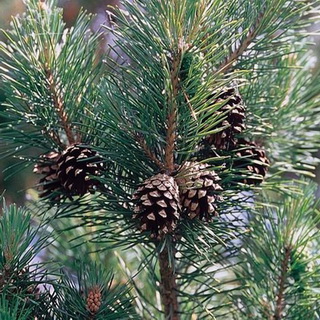
Pine syagaє 20-40 meters in height. The trees are strewn with strings of trunks, interspersed with red-brown bark. The crown of young trees is cone-like, and of old people it is wide and round.
Trees that grow on fox have a high crown, and for quiet trees that grow on open mids, the crown is low.
Medically vikoristovuyut nerozkriti spring brunky pine, needles, oleoresin. Smells to revenge essential oil, resins, starch, tanning speech, vitamins. Olya pine can be antiseptic, anti-fiery, spaghetti-stimulating power.

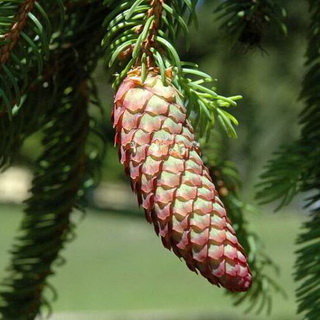
Yalina is zvichayna(Picea abies Karst) expanded practically across the entire territory of Russia. Lisous breed.
Yalina reach 30-35 m, trees grow 50 m in height and up to 1 m in diameter. Yalina is growing all life, a borderline age of 300 rocks.
Tse vichnozelene lisove conifer tree s superficial root system.
Tinyovitrivala, in a dense fox, the crown is preserved at the upper part of the tree, and in trees, which grow on very critical masses, the crown is restored from the earth itself.
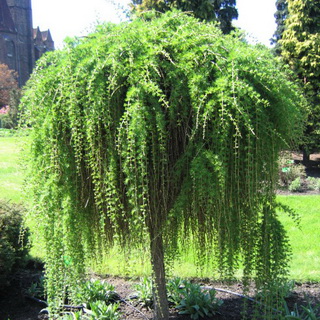
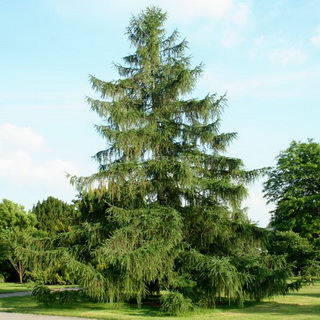
Modrina єvropeyska(Larix decidua) expanded at Siberia and the Distant Descent of Russia.
Modrina virostaє up to 50 m in height and up to 1 m in diameter. Bagє 300-400 rock_v.
Tsey view fox trees MAK a crown of a cone-like shape. Korenev system glybinna. Do not blame swampy conditions.


The needles are single, beef. Metatarsus, yaskravo-green, rostashovana spirally on the underdogs, and in bunches on the shortened ones.

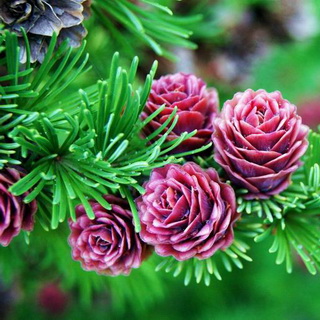
The cones of the egg-shaped form of the zadovzhka are 1.5-3.5 cm, ripening for the growth of the color. Ripe cones open either all at once, or, after wintering, on the cob of spring. Nasinnya dibne, egg-like, with sculpted krill. Fruiting will be repaired at about 15 years.
The tree is modrini spring, mіtsna, resinous, duzhe stiyka to gnitta.
Yak trees grow at lis: yalitsya, cedar and yalіvets
The next photo and name the trees of Russia, which do not compromise for their significant pine, yalintsi and modrina, - the price, cedar and tree.

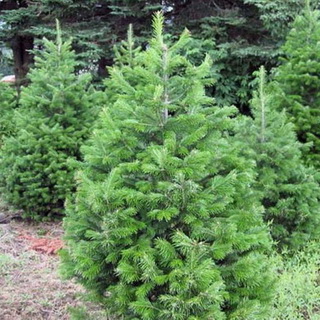
Yalitsa is zvichayna(Abies) expanded in the European part of Russia, in Siberia, in the Caucasus.
The tree is 40-50 m in height, the diameter of the trunk is close to 1 m. Lives are 500-700 rocks.
The crown is paramidal. The bark is light-sir, one with a chervonuvatiemny.
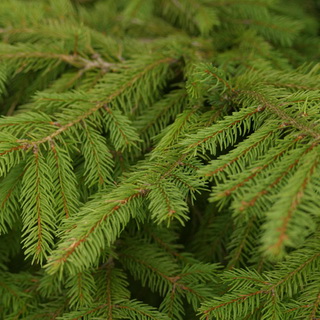
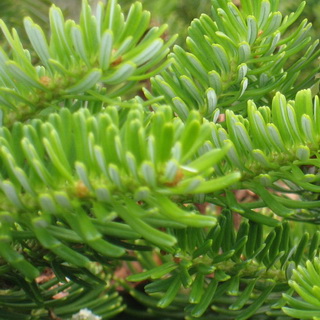
The needles are flat, rostashovana noble, comb often. The upper side is dark green, the lower side is dark green.
Bear fruit for 25-30 rubles.
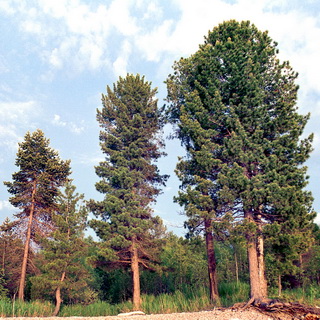
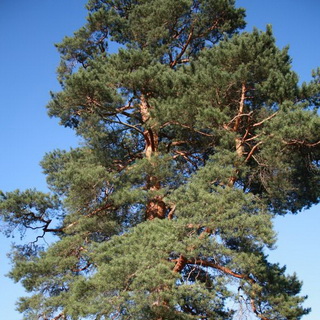
Siberian cedar(Pinus sibirica) — vinegreen tree 30-44 m in height, diameter of the stovbur is close to 1.5 m. Live up to 500 rocks.
Crohn's baguette, dense.
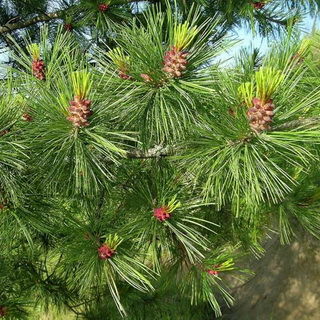
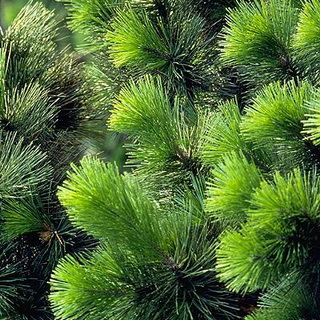
The needles are dark green іf sizim nalot, dozhinoy 6-14 cm, beef, in pinky trigonal, growth in bunches, five needles in a bunch.
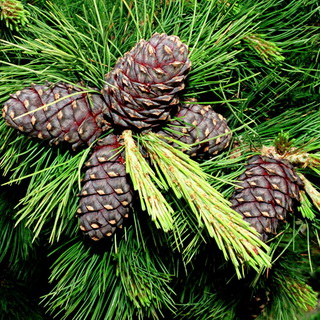

Mature cones are large, tight, egg-like forms, a sprinkle of violets, and sometimes brown, 5-8 cm overgrown, up to 13 cm.
The skin cone of a common forest species of trees is found from 30 to 150 nasin - cedar "gorishkiv".
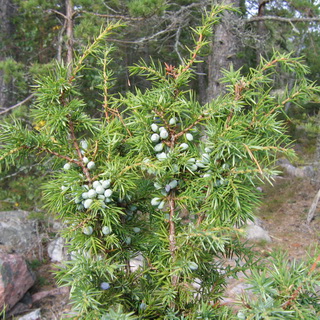
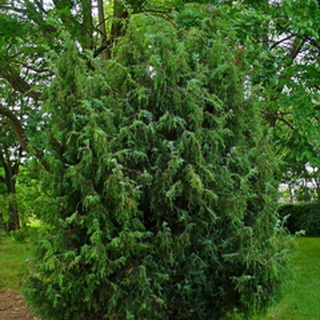
Yalivets zvychainy (Juniperus communis) Trapez around the whole territory of Russia.
Evergreen coniferous trunk tree or chagarnik 2-6 m high.
Crohn's baguette, dense.
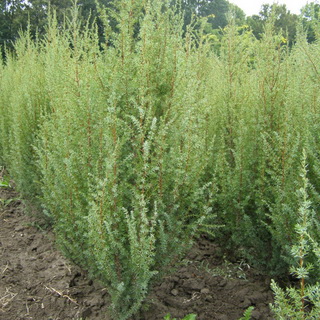

The needles are gostrogolchasta, rostashovana whorls of three needles, which are squeezed until the next and wash the ubik.
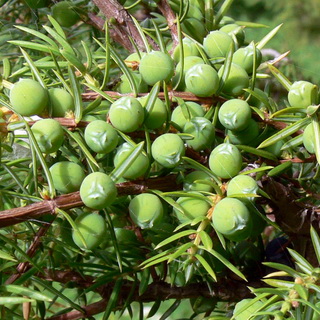

"Fruit" yalivtsyu, conesy berries, a sprinkle of green, on another rik blue-black with blue nalot and resinous pulp.
Pine berries are vicorized at the kulіnaria yak seasoning and for brewing infusions. Needles that shishkoyagodi vikoristovuyut for smoked ribi and meat.
Trees of lisiv of the middle smog of Russia with a photo and names: oak, birch, and linden
Surely, so name the trees of the middle smog of Russia, yak oak, birch, and linden.

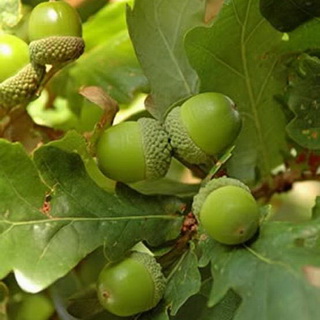
Petiolate oak (Quercus robur) reach 20-40 m
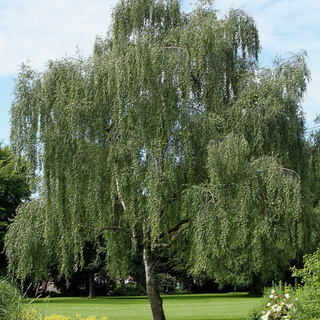
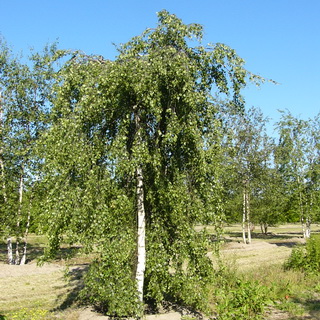
The name of such a tree is Russia, yak birch (Betula pubescens), mіtsno association іf our land. A birch tree grows all over the European part of Russia, near the Western and Shidny Siberia, near the Caucasus mountains, in one of the symbols of the state.
Reach 25-30 m at a height up to 80 cm at a diameter. The bark of young trees is brownish-brown, and from 8-10 rocks. Bags up to 120 rubles.
The Koreneva system of birch is strongly rosy, ale penetrates into the soil negliboko.
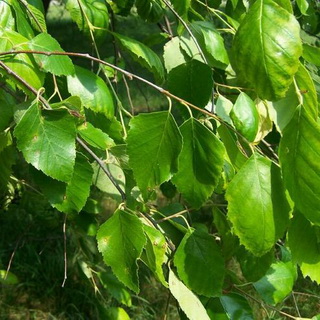
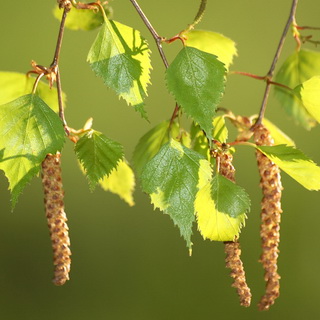
Leaves are ovate or rhombic-ovate, 3.5-7 cm long, 2.5-5 cm wide.
The tree is monoecious, ale catkins are rosied. Fruiting catkins are up to 2.5-3 cm in size, on pubescent saplings, hatches 3-5 mm wide, along the edge of the part.
Leaves and nirki zasosovuyut at folk medicine.
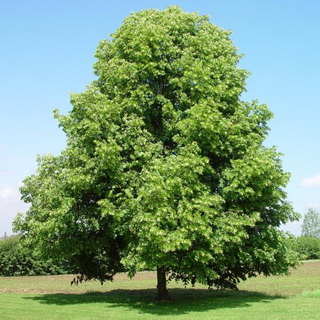
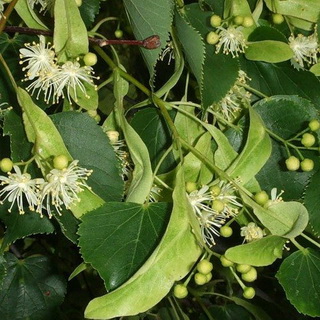
The linden is sercepodibna, or the linden is dibnolist (Tilia cordata) expanded in the European part of Russia, especially in the Urals.
20-38 m head with a shatropodіbny crown.
The bark is dark, furrowed on old trees.
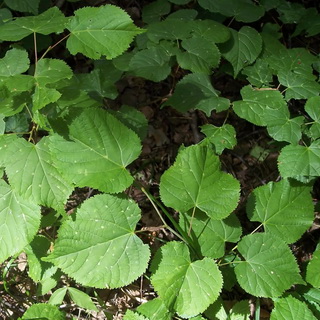

Leaves are chergove, sercepodibne, dovgochershkov, toothy, green at the top, sizuvate at the bottom.

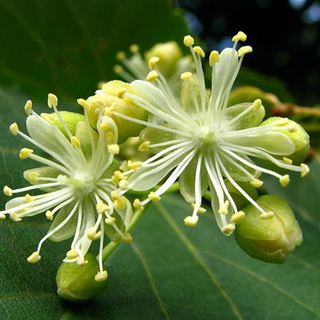
Quotes are correct, double-sided, with a sub-base five-sectioned otsvitinoyu, up to 1-1.5 cm in diameter, zhovtuvato-bili, odorous, selected in hanging shield-like suction, 3-11 pieces. Blossom from a cob of linden 10-15 days.
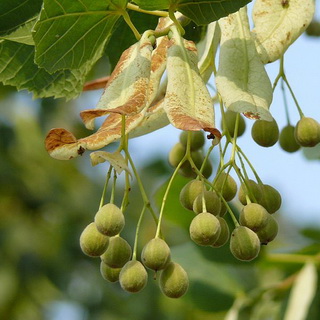
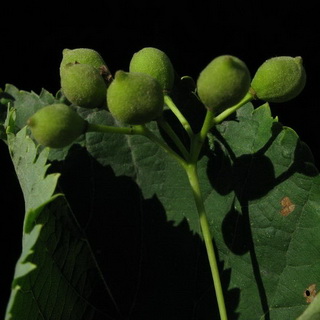
The fruit of the forest tree of Russia is kulyasti, pubescence, thinness, one or two pots. Fruits ripen at crescent - heather.
Lipovy color is used as a flavoring agent in perfumery, in brandies and liquor brands, as well as as a substitute for tea.
Honey plant. For the savory and delicious flavors of lipovia honey, it is long time ago to be used for the most beautiful.
Yak trees are visible in foxes: osika, maple, elm and beech
The upcoming photo that you name the average smog of Russia, as you do not compromise on those for your importance - tse Osika, maple and beech.
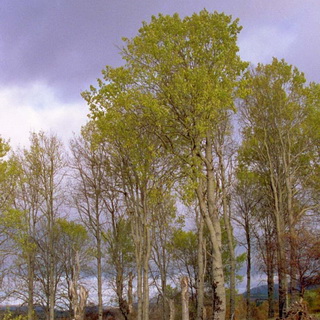

Osika is zvichayna, for the poplar tremtyach (Populus tremula) widely expanded in areas with cold climate of Europe and Asia.
Osika MAє kolonopod_bniy stovbur, up to 35 m-code in diameter and up to 1 m-code in diameter.
Live 80–90, sometimes up to 150 rock.
The bark of young trees is smooth, light green or greenish-gray, with a glimpse of drift and darkness.
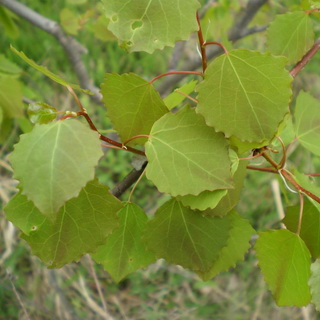
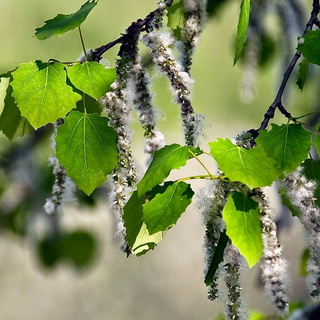
Leaves are rounded or rhomboids, up to 3-7 cm thick, they are too dull at the tops, with a rounded base, the edge of the city, the feathering.
Plid - duzhe dibna box.
From the squares of the wasps at the squares of the bjoli they pick up files, and from the nirok - glue, which is processed into propolis.
Asses are attributed to the power to bring evil spirits.
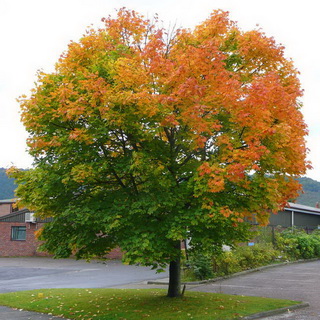
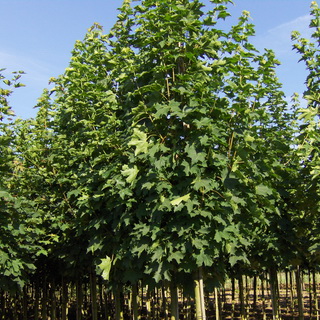
Gostrolisty maple, or sycamore maple (Acer platanoides)- Deciduous tree with a height of 12-28 m with a dense, curly crown.
The bark of young trees is smooth, gray-brown, and grows dark in the dark.

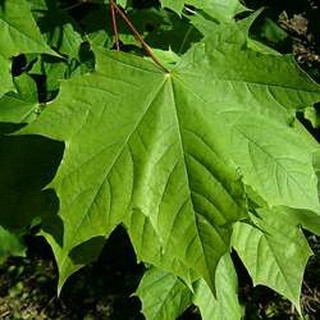
Leaves are simple, dovovidne, opposite, with 5-7 serrations, large-toothed shovels, on the tips of the shovels, sharpened, heads, up to 18 cm in dozhin.
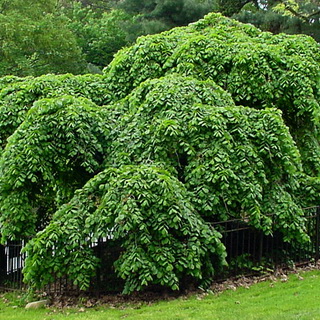
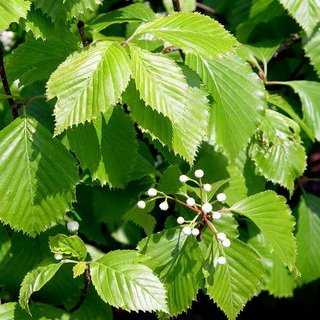
V'yaz, abo elm (Ulmus)- Mostly deciduous roslin. The height is 40 m with a trunk diameter of 2 m; The crown is wide-cylindrical from the rounded apex to compactly kulyastoy.
Life is 80-120 years old, living up to 400 years old.
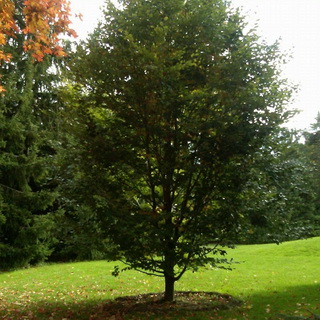
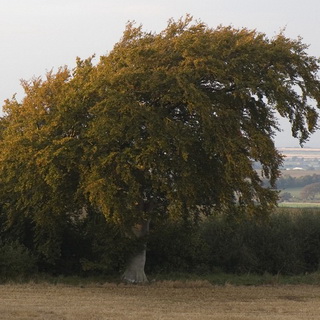
Lisovy beech, abo European beech (Fagus sylvatica)
Deciduous tree up to 30-50 m with a stringy colon-like trunk with a diameter of up to 1.5 m (bagatovy trees up to 3 m), egg-like or wide-cylindrical crown.
A bag of 500 rockyv, from one to 950 rockyv.
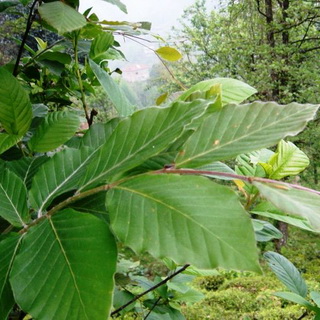
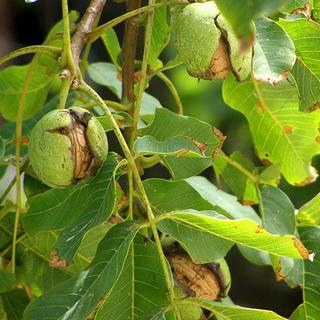
Leaves are elliptic, wide-pointed up to the base and up to the top, 4-10 cm long, 2.5-7 cm overgrown.
Ascending leaves, chewing, amid the storm, falling off naprikіntsі zhovtnya.
Gorihi vikoristovuyutsya for food: the sirom has a stench in great number shkіdlivі, more beautiful than їх live pіdsmazhenіmi.
Everything about the tree lisu hornbeam is clear
How can a tree grow at the forest of Russia? At the same time, the description of the hornbeam is clear.

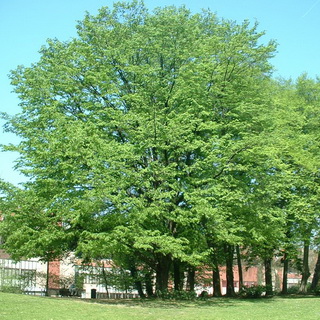
European hornbeam (Carpinus betulus)
A tree with a height of 7-12 m, inode up to 25 m. Stovbur up to 40 cm in diameter, ribbed. The crown is dense, cylindrical. The bark of young trees is sredlyasto-sira, with a lot of growth.
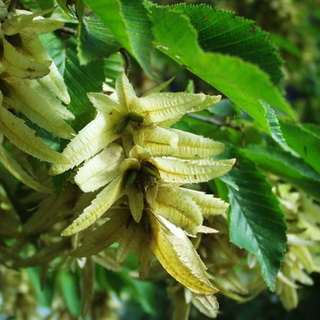
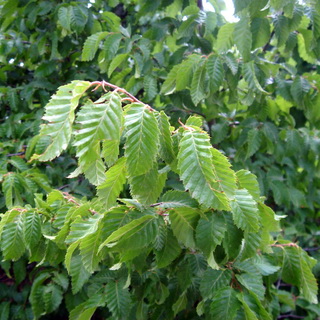
Leaves are oval, sharpened, up to 15 cm wide, 5 cm wide, dark green above.
For the hornbeam, they make musical instruments, veneer, handles for instruments, parquet.
Poplar (Populus)
Rid shvidkoroslikh trees of the family of willows. Great trees with a height of 40-45 m and a diameter of a stoovbur up to 1 meter.
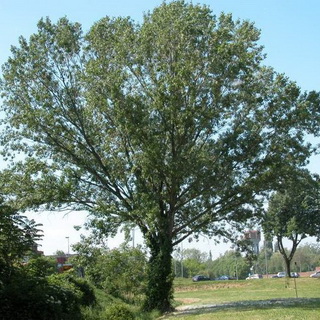
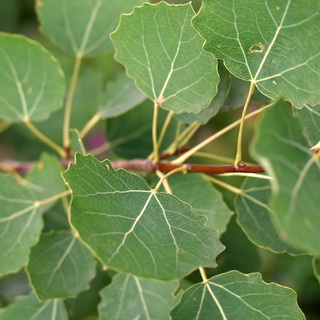
Rid nalichu close 90 species.
Clear zvichiny (Fraxinus excelsior)
Extensions at the European part of Russia.
A tree with a height of 20-30 m and a trunk diameter of up to 1 m.

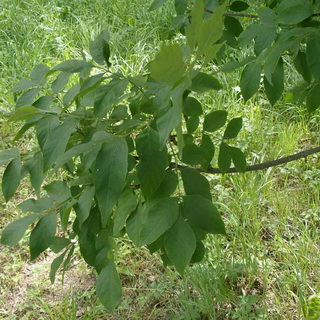
Bark sira. Leaving odd-pinnate, fold in 7-15 leaves. The leaves are lanceolate, above it is bright green, and below it is light green color. Quotes of others, two-stage.
Honey plant.
You can see the willow and willow trees
Speak about those trees that grow into foxes, so vividly, it’s like a willow and a willow.


Pussy willow(Salix) representing є a tree zavishki up to 15 m-code abo mensh visoky chagarnik. Find 170 species of willows close up.
The staff of the building give the appendages of the willow roots easy to multiply with live bait.

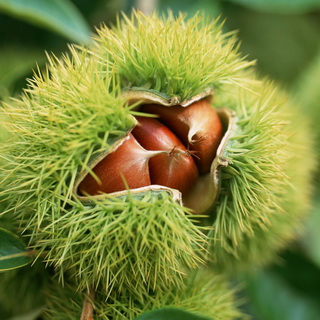
Leaves chergove, often.
The stem is gillyaste, thin gills, rods-like, snarls, lambs, with a dull, abrasive bark.
Quotes of razdіlnostatіvі, others, picking from a dense sutsvіttya. Blossom until the leaf is released.
Plid is a box that can be opened with two chairs.
The bark of the willows and the twigs of the willows of the chagarnikovykh are vicorized for the preparation of wicker virobes.
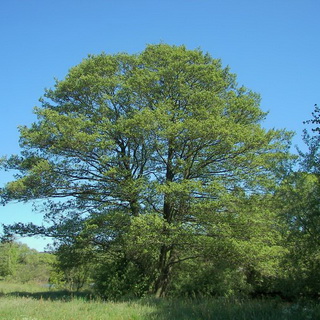
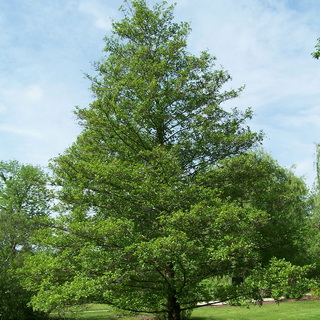
Vilha mirna, or vilha glue (Alnus glutinosa)- Wood up to 35 m in height, up to 90 cm in diameter with stovburom. The crown is paramidal.
Bagє up to 80-100 rubles.
Korenev's system is superficial.
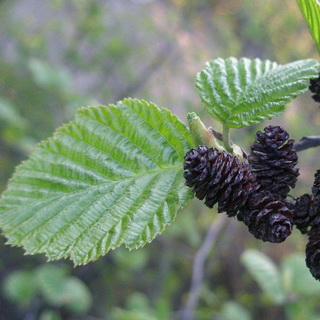
Leaves are opposite, simple, rounded, 4-9 cm wide, 6-7 cm wide.
Color early spring until the leaf appears. Plid - a cone of 2 cm of the head and 2-2.5 cm of the overwhelm.
Lisovy chagarniki vovchoyagidnik, veres, bagno and lischina

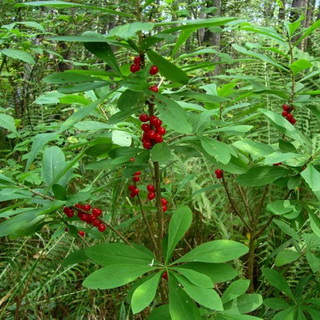
Vovcheyagodnik zvychainy, anyway, vovche face(Daphne mezereum)- deciduous, small-leaved, 60-120 cm high, chagarnik, which grows near a small tree.

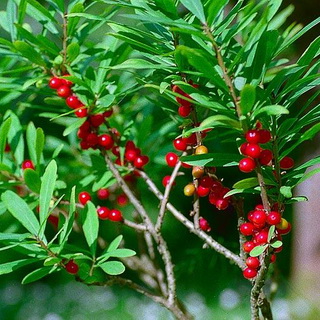
Fruits - oval-shaped chervoni kistiankas with swirling glittering weeds. Bear fruit for example linden - serpentine.
Stretch a part of a roseline, especially fruit, to avenge the bran sic.
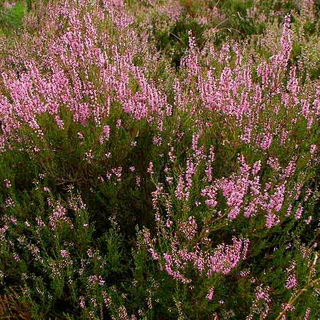
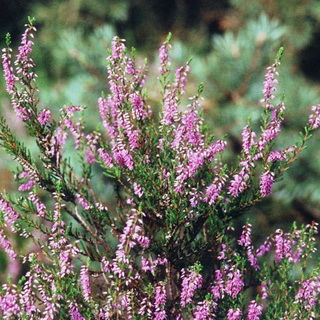
Veres zychiny (Calluna vulgaris) growth in the European part of Russia, Western and Skhidny Siberia.
Vіchnogeleniy, chagarnichok, which is very strong, with other trigonal leaves.
Honey plant. Heather honey is a good antiseptic.
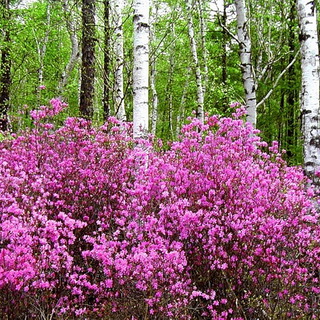

Bagno (Ledum)- Green chagarnik, for Russia there are about ten species.
Leaves and gully bugs see a strong stupefying smell, wicked foulness, head bangs, nudity, blues, sometimes and loss of quality.


Lіshchina is zvychana, or lіshchina(Corylus avellana)- deciduous, woody chagarnik, with a height of 2-7 m. The crown is egg-like, or flat-kulyasta. The bark of the stoves is smooth, light, brown-gray.
Leaves are rounded, 6-12 cm wide, 5-9 cm wide, at the top, ringing in vistri.
Tichinkov_ earrings up to 5 cm; screaming lusky densely pubescent, pillows of heads, from above with a bunch of hairs.
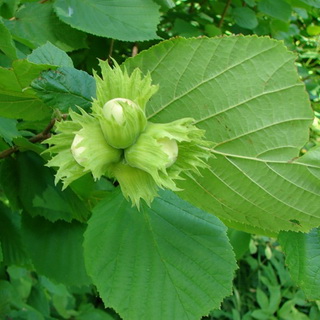

There are a lot of swells or trochas of podvzheniy, up to 1.8 cm, with a diameter of 1.3-1.5 cm.
